How are Leg Raises with Parallel Bars Beneficial
Leg raises on parallel bars are an effective bodyweight movement that strengthens your abs, develops your core, and improves stability. The objective is to grab a pair of parallel bars or position yourself inside a Captain’s chair and engage your abs, repeatedly lifting and lowering your legs.
One of the most notable benefits of parallel bar leg raises is that the movement strengthens and develops your abs. Your core has to work hard to keep you stable, and your abs have to produce a lot of force to complete each repetition.
Another benefit of the movement is that you can adjust the difficulty to fit your strength. You can begin with bent knees, progress to straight legs, and possibly introduce ankle weights down the road.
We recommend including the leg raise near the end of your session and doing as many controlled reps as possible.
Level of Exercise: Intermediate
How to do Leg Raises with Parallel Bars

- Suspend your body on a pair of parallel bars with your back against the device’s supporting pad and feet on the platform (if there is one).
- Bend your arms and place your forearms flat against the horizontal pads with your hands grasping the handles for extra support.
- Bring your shoulders back and down by engaging your upper back.
- Remove your feet from the platform if the particular device has one.
- Brace your midsection, keep your upper body tense, and have your lower back against the back pad.
- Take a breath and raise your legs in one fluid motion by engaging your abs. Your knees should be almost entirely straight. You can cross your feet or keep them apart––whichever feels more natural.
- Pause at the top as you squeeze your abs, then slowly lower your legs to the bottom.
- Exhale near the bottom and resist the urge to arch your lower back as you complete the repetition.
- Take another breath and raise your legs again.
What muscles does a leg raise with parallel bars activate?
The primary muscle that works during parallel bar leg raise is the rectus abdominis (the six-pack muscle). Our abs span from just below the ribcage to the pelvis, and their primary function is to shorten the distance between the two areas (1). Aside from that, our abs provide torso stability. As we hang from parallel bars, engaging our abs raises our legs horizontally.
Our transverse abdominis and obliques also contribute during a leg raise. These muscles flex isometrically to provide torso support and help us remain rigid as we raise and lower our legs (2).
Some hip flexor involvement is also inevitable during the movement as these muscles produce force, helping us raise our legs to the top position (3). Their involvement becomes even more significant if the trainee allows the lower back to arch, which lengthens the rectus abdominis, placing the muscle at a mechanical disadvantage.
Aside from the midsection, the upper back, shoulders, arms, and chest also play a role during parallel bar leg raises. These muscles flex isometrically, allowing us to remain in position and keep our shoulder blades retracted and depressed.
Proper Form when Performing a Leg Raise Parallel Bars
The most important tip to keep in mind for leg raises is to perform each repetition smoothly and in one fluid motion. Doing so is vital for focusing on your abs and preventing your hip flexors from taking over. Fluid motions also make it easier to remain balanced, especially on more challenging variations like the hanging leg raise.
Our second tip for proper form on leg raises is to pay just as much attention to each repetition’s lowering (negative) portion as you do for the raising. Your abs work hard to raise your legs, but they are also responsible for the slow and controlled descent, so paying attention to that makes each repetition much more effective.
The third tip to keep in mind for effective leg raises is to keep your lower back against the back support at all times. Doing so ensures that your abs remain engaged and do most of the work. Allowing your back to arch leads to lengthening of the rectus abdominis, preventing the muscle group from engaging and instead forcing your hip flexors to take over.
Variations and Modifications of the Leg Raise with Parallel Bars
1. Hanging Leg Raises
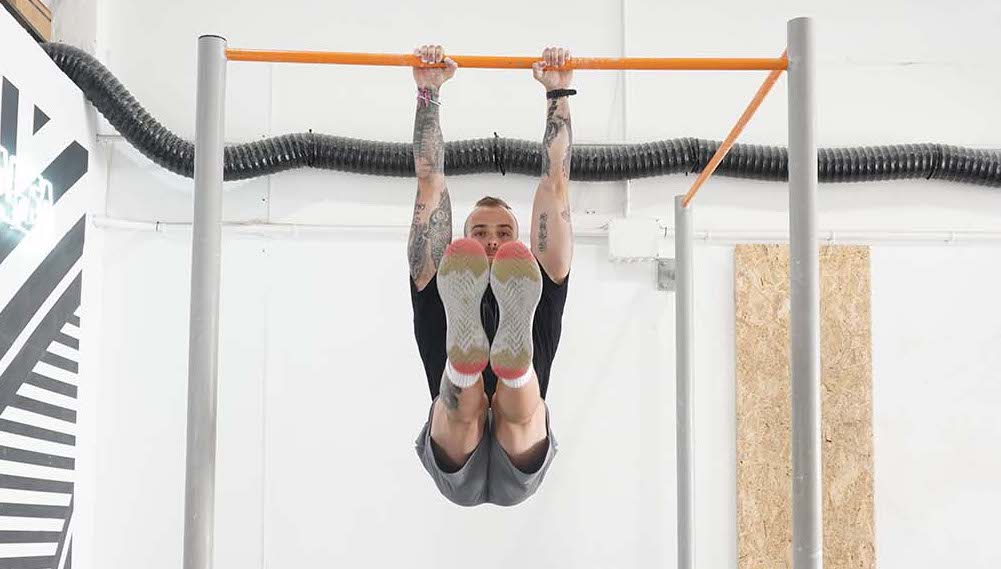
Hanging leg raises are a more challenging variation that develops your core strength and stability even more. The objective is to grab a pull-up bar and lift your legs repeatedly. If that feels too challenging, you can bend your knees as you raise your legs.
2. Knee Raise With Parallel Bars
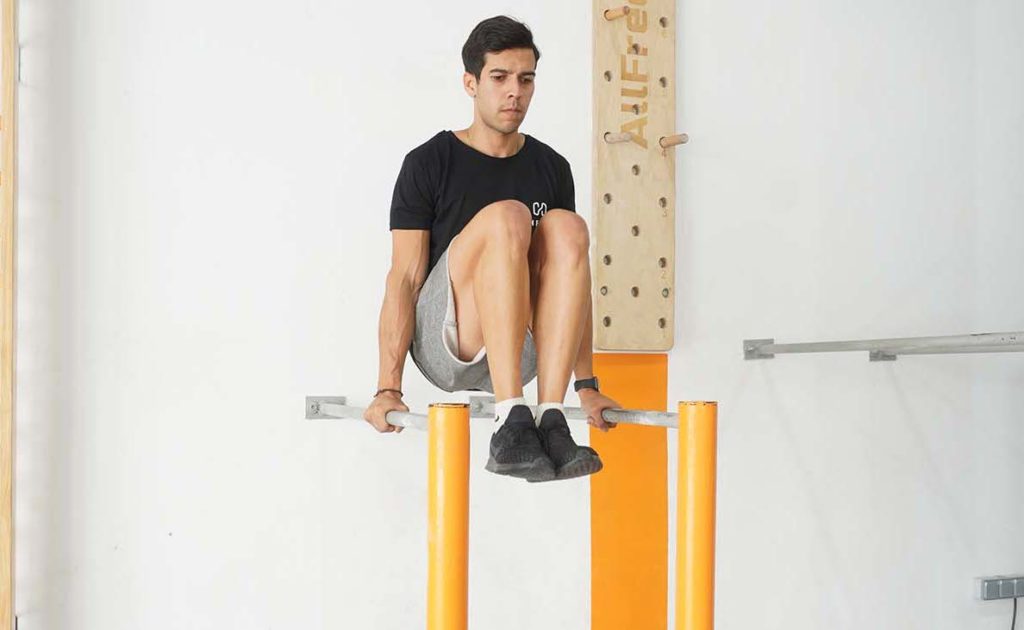
If leg raises feel too challenging, you can swap to the easier knee raises, also known as knee tucks. The objective is to bend your knees as you lift your legs toward your torso, as doing so makes the exercise more suited for beginners.
3. Lying Leg Raises
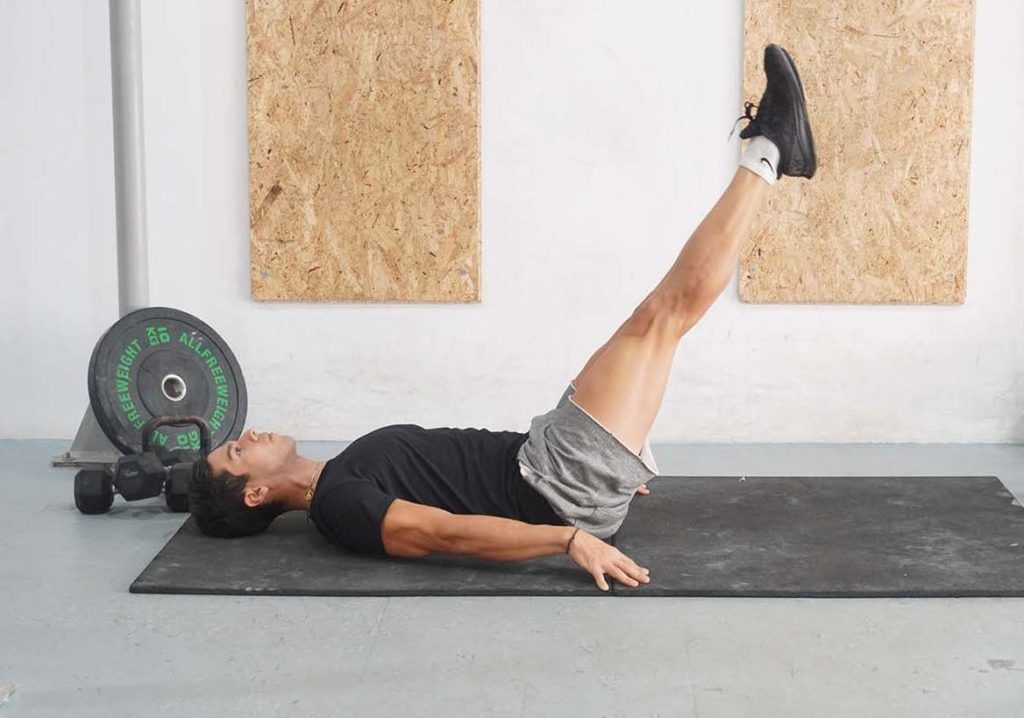
Lying leg raises are a variation you can perform if you don’t have any equipment available. The objective is to lie on the floor, keep your lower back in contact with the exercise mat, and lift your legs repeatedly.
Mistakes to Avoid
Dropping Your Legs Too Quickly
One of the most common mistakes with any leg raise exercise is allowing your legs to drop to the starting position. Doing so prevents you from taking advantage of the eccentric contraction and increases the risk of arching your lower back at the bottom. Avoid the error by controlling the descent and keeping your abs engaged.
Arching Your Lower Back
Often, as trainees lower their legs to the bottom, their lower back arches. The error is subtle to catch, but arching puts unnecessary stress on your spine and prevents your abs from working as effectively. Avoid the mistake by keeping your lower back against the back support from start to finish, being particularly mindful near the bottom of each repetition.
Allowing Your Shoulders to Shrug Up
The third common mistake with the parallel bar leg raise is allowing your shoulders to shrug up and your torso to drop a few inches once you suspend yourself in the air. Doing so puts unnecessary stress on your upper back and shoulders. Avoid the mistake by bringing your shoulders back and down, keeping them in position from start to finish. Stop the set if you feel that your body is sagging.
Similar Exercises to the Leg Raise with Parallel Bars
Decline Crunch
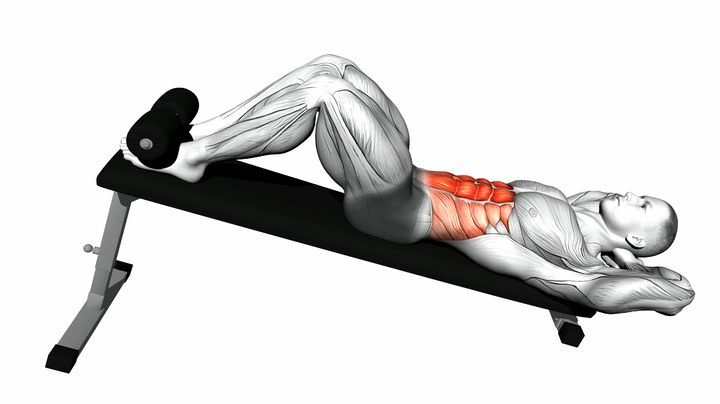
Decline crunches are a simple and effective bodyweight exercise that develops your rectus abdominis. The objective is to lie on a decline bench, anchor your legs, and engage your abs to lift your upper back several inches off the bench.
L-Sit Hold
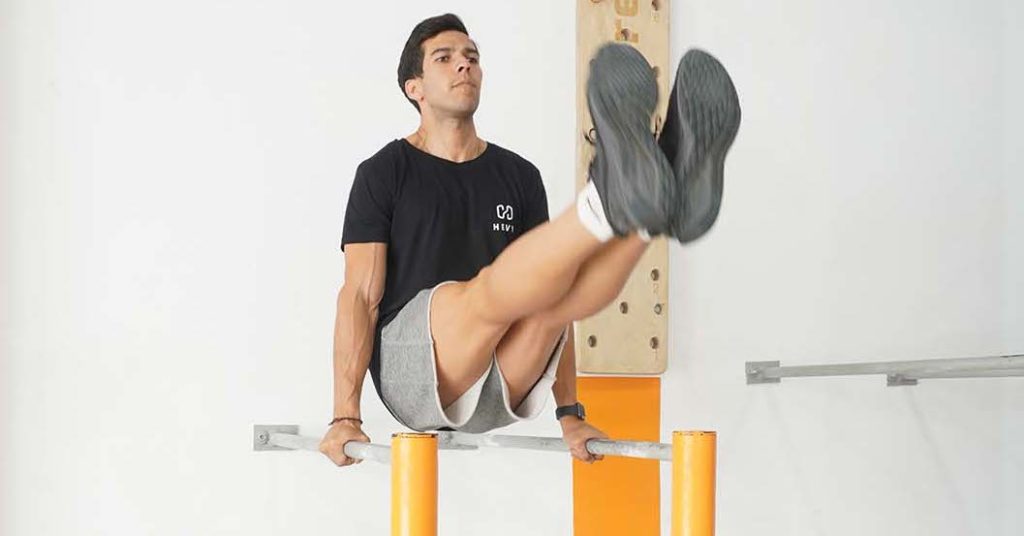
The L-sit hold is an effective isometric exercise that develops core strength and whole-body balance. The objective is to suspend yourself on parallel bars or hang from a pull-up bar, lift your legs, and hold the position.

